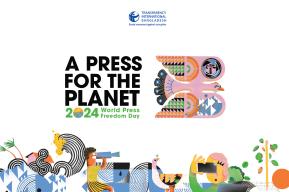News
Students from four Yemeni schools collect eDNA samples in Socotra Archipelago

From 28 June to 3 July 2023, 44 students aged 11 to 16 years from four schools collected water samples at 5 different marine protected areas across the Socotra Archipelago World Heritage site, namely Roosh, Qariah Lagoon, Di Hamri, Qalansiah Ditawah, and Mahafarihen Qasherihan.
The group filtered genetic material of species with the help of eDNA citizen-science sampling protocols and equipment provided by UNESCO, under the guidance of experts from the Environmental Protection Authority (EPA). Preservation liquid was subsequently added to the samples to fix the eDNA and make them ready to ship to a specialized lab for analysis, alongside other eDNA samples from around the world.
Environmental DNA is an innovative scientific method that can be used to monitor and evaluate ocean biodiversity without the need to extract organisms from their environment. Just one liter of water may contain genetic material from hundreds of species and may help determine the area’s biodiversity richness.
The UNESCO environmental DNA Expedition initiative is being rolled out across 25 marine World Heritage sites between September 2022 and April 2023. The eDNA data is expected to provide a one-off snapshot of biodiversity richness across marine World Heritage sites, particularly for fish species.
By combining the resulting biodiversity data with Intergovernmental Panel on Climate Change (IPCC) heat scenario projections, the initiative aims to provide a first glimpse of potential geographic and distribution shifts of fish species as a result of climate change which then in turn can inform conservation decision-making.
The eDNA Expeditions’ resulting data will be made publicly available through the UNESCO Ocean Biodiversity Information System, the world’s largest open science marine species database. Final results are expected to be available in Spring 2024.
The UNESCO eDNA initiative is a joint collaboration between the Intergovernmental Oceanographic Commission and the World Heritage Centre. It is made possible with the support of the Government of Flanders (Kingdom of Belgium) and implemented in the context of the United Nations Decade of Ocean Science for Sustainable Development (2021-2030).
About the Socotra Archipelago World Heritage site (Yemen)
Located in the northwest Indian Ocean near the Gulf of Aden, Socotra Archipelago is globally important for biodiversity conservation because of its exceptional level of biodiversity and endemism in many terrestrial and marine groups of organisms. As one of the most biodiversity rich and distinct islands in the world, the island group was inscribed on the UNESCO World Heritage List in 2008. The marine life of Socotra is very diverse, with 253 species of reef-building corals, 730 species of coastal fish and 300 species of crab, lobster and shrimp.






